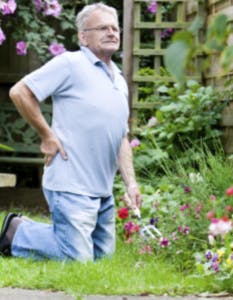Why Do I Have Tennis Elbow?
You may recognize this situation: The doctor diagnoses your elbow pain as something called tennis elbow–but you’ve never played tennis at all! Don’t be confused by the name – tennis elbow is a common complaint, and a background in sports isn’t necessary to be afflicted.
The medical term for tennis elbow is lateral epicondylosis, referring to the tendons attached to the bone in your arm near your elbow. These are the tendons that extend the wrist and fingers. But after episodes of repeated gripping or lifting, these tendon anchor muscles can become inflamed or degenerated. When this happens, the attachment of these tendons becomes weakened, and places a strain on the muscles. This can lead to intense pain. It often starts at the bony point on the underside of the elbow and radiates down your forearm. The severe pain can wake you up at night, or stop you from lifting your morning cup of coffee.
Treatment and Therapy
The treatment of tennis elbow targets improving the health of these strained tendons. Restoring strength to the connected muscles is also critically important. The first thing that doctors usually recommend to treat this condition is nonsurgical management. This can include anti-inflammatory medications or steroid injections into the painful area. But in the early stages, a referral to a hand therapist is also highly recommended!
An occupational therapist, or a therapist who specializes in working with the hand, wrist, and elbow, will identify what is needed to alleviate the pain in the short term and restore the tendon’s health in the long term. Hand therapists use manual techniques that will help you to move smoothly and comfortably through the stages of healing. In some cases, the therapist may need to customize a splint or brace for you. They will also develop a program of exercises and stretches that you can do at home when you are ready.
Whether you’re Roger Federer or an Average Joe, tennis elbow can be a painful, stressful ailment. But a good therapist is key to achieving your goals when it comes to recovering, and is the first step on the road to getting you back in the action!
Article written by Joanne E. Petrunik, OTR/L. Joanne specializes in Hand Therapy, Upper Extremity Rehabilitation, Sports Injuries and Pre- and Post- Operative Rehabilitation. You can request an appointment with Joanne at one of our locations.
.png?auto=format&auto=compress&h=150)
 It begins
It begins



